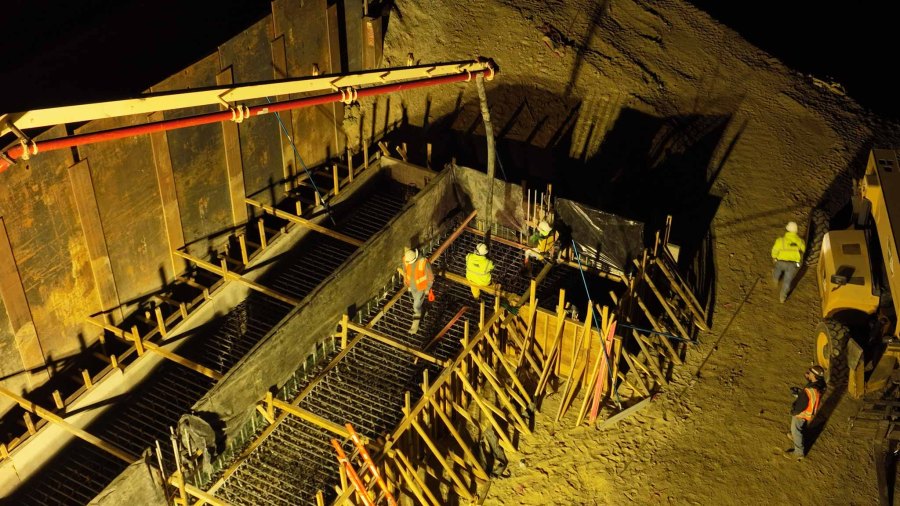Steady progress is being made on the Wallis Annenberg Wildlife Cross in Agoura Hills, according to a recent update provided by the California Department of Transportation.
Last week, crews worked overnight to pour “hundreds of tons” of wet concrete for the foundation of the bridge wall next to the southbound lanes of Highway 101, Caltrans said.
Photos of the project shared by Caltrans show the area where concrete was poured as part of the integral bridge wall that will eventually suspend the largest wildlife crossing ever constructed.
The photos show a wood form with reinforcing rebar rods placed as crews began to pour thousands of pounds of wet concrete inside the form. The wooden form, Caltrans said, would later be removed, leaving only the concrete and steel foundation in place. The bridge wall will then eventually be built on top of the newly constructed foundation.
The late night work took place on the evening of Nov. 3 and into the early hours of the following morning.
The Wallis Annenberg Wildlife Crossing is located above Highway 101 near Liberty Canyon Road.
The massive wildlife crossing bridge will connect two natural landscapes that have been bisected by one of the nation’s busiest highways, stretching over 200 feet long and 165 feet wide across the roadway.
Construction crews broke ground in spring 2022, but the effort to make the ambitious construction project a reality has been in the works for several years, boosted by the presence of the beloved mountain lion P-22, who symbolized the plight of animals who have found themselves trapped on all sides by urban sprawl.

The price tag for the project was originally estimated to be more than $90 million.
The freeway crossing is planned to open to wildlife in 2025, Caltrans says.
There are currently only a handful of wildlife crossings across California, but that could change in the coming years.
In September 2022, Gov. Gavin Newsom signed legislation to require the state to identify locations where animals face barriers that separate them from moving freely and prioritize building or converting existing infrastructure to allow them to cross more safely.
The decision was lauded by animal welfare groups and researchers who say that, despite the hefty price of new construction, not making it easier for animals to move freely would have its own set of costs.
“We know there are costs of isolation,” said Dan Blumstein, a UCLA professor of ecology and evolutionary biology. “We mess with mother nature at our own risk and the solutions are often expensive, but wildlife crossings and wildlife corridors has been very successful in other places, and I expect at some level, will be successful here.”
For more information on the Agoura Hills crossing, click here.

























